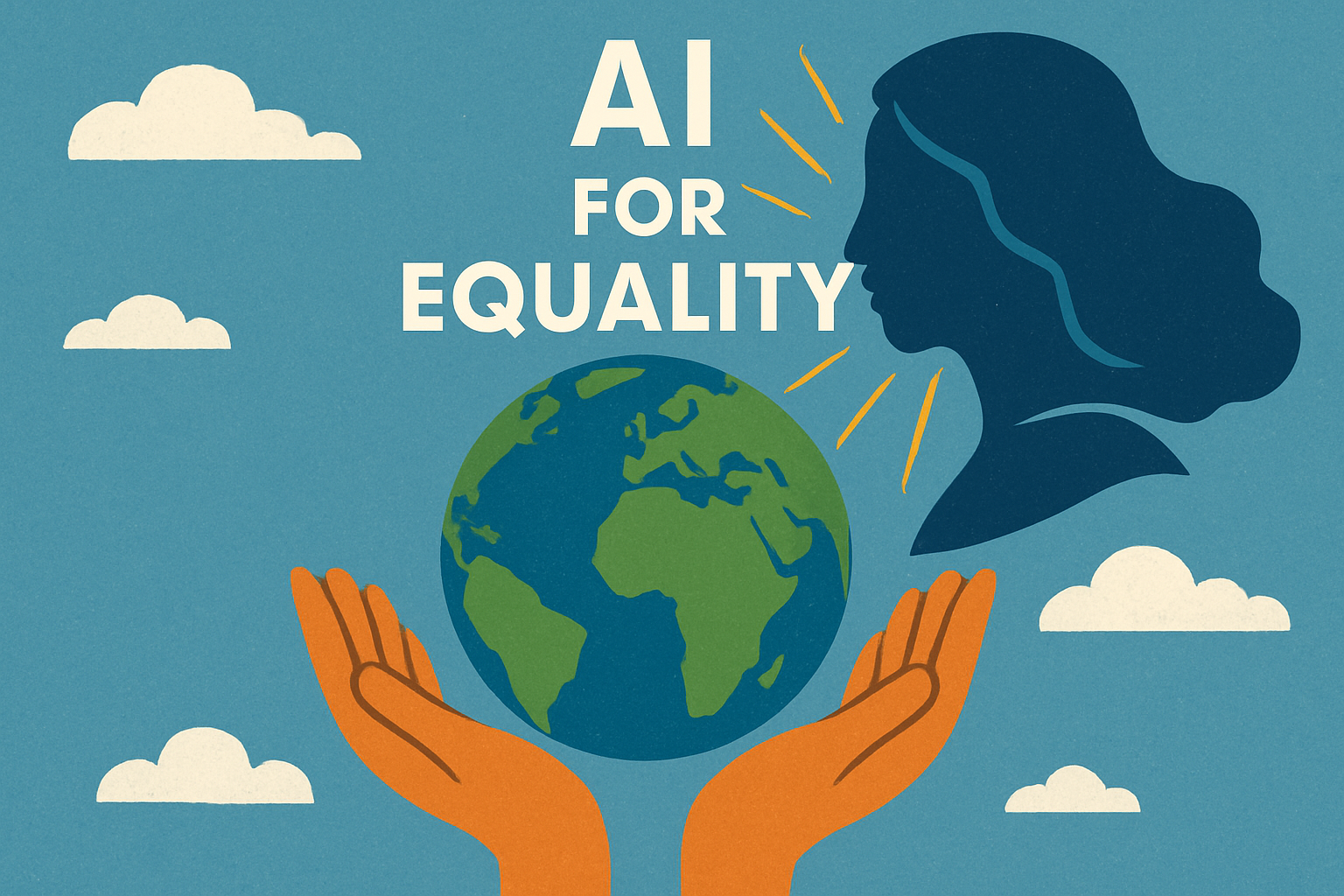Beyond the Hype: AI as a Genuine Tool for Global Equity
The narrative around Artificial Intelligence often oscillates between dystopian fears and utopian dreams. But beyond the speculation lies a more practical, powerful reality: AI is emerging as one of the most significant tools we have for correcting and alleviating deep-seated global inequalities. For billions of people, access to quality healthcare, education, and economic opportunity is limited by geography and wealth. AI, if developed and deployed thoughtfully, has the potential to dismantle these barriers.
This isn't about a far-off future; it's about tangible applications making a difference today and scalable solutions that could redefine the quality of life for people everywhere.
Democratizing Expert-Level Healthcare
Perhaps the most profound impact of AI on equality will be in health. For many, access to a medical specialist is an impossible luxury. AI is changing that by unbundling medical expertise from the expert.
The Challenge: A radiologist in Switzerland has access to decades of training and state-of-the-art equipment. A rural clinic nurse in Southeast Asia does not. This disparity in diagnostics leads to preventable deaths and misdiagnosed conditions.
AI in Action: Medical Imaging Analysis AI models, trained on millions of medical images (X-rays, retinal scans, CT scans), can now detect diseases with a level of accuracy that meets or even exceeds that of human experts.
- Fact: Google Health's AI model can detect diabetic retinopathy—a leading cause of blindness—from retinal scans with over 90% accuracy. This system can be deployed on a smartphone connected to a simple lens, bringing crucial screening to remote areas without ophthalmologists.
- Logical Conclusion: This technology effectively puts a world-class diagnostician in the pocket of any healthcare worker. It bypasses the need for expensive, centralized equipment and highly specialized staff for initial screenings, saving sight and lives.
AI in Action: Drug Discovery for Neglected Diseases Pharmaceutical research is incredibly expensive, meaning diseases that primarily affect the poor (like Chagas disease or leishmaniasis) are often under-researched.
- Fact: AI platforms can analyze vast biological datasets to predict how different compounds will interact with pathogens, dramatically accelerating the process of identifying potential drug candidates. This reduces the time and billions of dollars required for R&D.
- Logical Conclusion: By lowering the cost and risk of drug discovery, AI makes it economically viable to develop treatments for "neglected tropical diseases," directly tackling health issues that perpetuate poverty.
Revolutionizing Access to Knowledge
Education is the primary engine of social mobility, yet quality instruction remains a lottery of birth. AI-powered platforms can provide personalized, world-class education to anyone with an internet connection.
The Challenge: A classroom may have one teacher for over 50 students, each with different learning speeds and styles. The curriculum is fixed, and individual attention is minimal.
AI in Action: Personalized Learning Platforms AI tutors can adapt to a student's individual needs, creating a unique learning path for them.
- Fact: Platforms like Khan Academy are integrating AI (Khanmigo) to act as a Socratic guide, asking questions and helping students work through problems without just giving the answer. These tools are available 24/7.
- Logical Conclusion: This shatters the "one-size-fits-all" model. A child in a remote village can receive a more personalized and responsive education than a student in a traditionally-run, well-funded school. It fosters true understanding over rote memorization.
AI in Action: Overcoming Language Barriers Access to information is often blocked by language.
- Fact: Real-time AI translation services are becoming incredibly accurate. They can translate entire libraries of educational texts, scientific papers, and technical manuals into hundreds of languages.
- Logical Conclusion: This unlocks the bulk of human knowledge for anyone, regardless of their native tongue. A farmer in Kenya can access the latest agricultural research from Japan; a student in Peru can read technical documentation from Silicon Valley.
Forging New Paths to Economic Opportunity
Economic inequality is driven by unequal access to capital, markets, and resources. AI is creating new, more inclusive systems.
The Challenge: Billions of people are "unbanked," with no credit history, preventing them from securing loans to start a business or manage emergencies. Farmers often rely on tradition rather than data, leading to crop failures.
AI in Action: Precision Agriculture
- Fact: AI-powered applications, using satellite imagery and weather data, can provide small-scale farmers with precise recommendations: when to plant, how much fertilizer to use, and how to identify crop disease early. Companies like Plantix provide this via a simple smartphone app.
- Logical Conclusion: This provides smallholders with the same data-driven advantages as large agricultural corporations, increasing crop yields, boosting income, and enhancing food security for their communities.
AI in Action: Financial Inclusion
- Fact: Fintech companies are using AI to create new credit scoring models based on alternative data, such as mobile phone usage and utility payments.
- Logical Conclusion: This allows lenders to safely provide loans to individuals outside the formal banking system, unlocking entrepreneurship and providing a crucial financial safety net for millions.
The Ethical Imperative: Steering AI Towards Fairness
To realize this potential, we must be vigilant. AI is not inherently fair. If trained on biased data, it will perpetuate and even amplify existing injustices. The digital divide could widen, leaving those without internet access further behind.
The responsibility falls on us—the developers, policymakers, and users—to demand transparency, fairness, and accountability from these systems. We must invest in open-source technologies, promote data privacy, and ensure that the benefits of AI are distributed widely, not concentrated in the hands of a few.
The journey towards a more equal world is complex, but for the first time, we have a tool powerful enough to address inequality at a systemic level. AI is not a silver bullet, but it is a catalyst. By focusing its power on the fundamental pillars of a quality life—health, education, and economic opportunity—we can write a new chapter in human history, one defined by greater equity for all.
Join the conversation on building a more equitable future with technology at Learn Earth.
